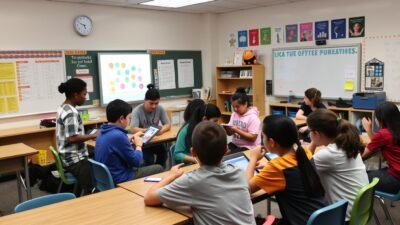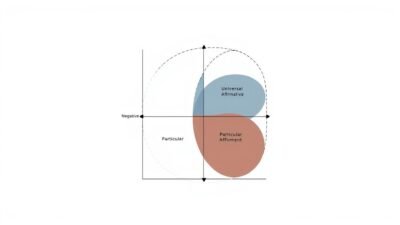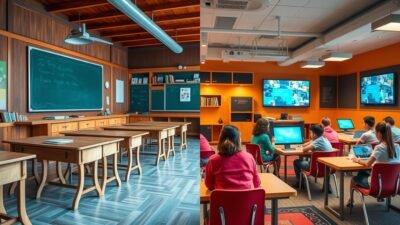Are we truly prepared for nature’s unpredictable fury? As natural disasters become increasingly frequent and severe, the need for effective community education on hazard mitigation has never been more critical. This article delves into cutting-edge strategies that empower communities to face these challenges head-on, exploring how innovative approaches to disaster risk reduction and emergency preparedness can make a lasting impact.
From leveraging technology to fostering strong community networks, we’ll uncover the keys to building resilient societies capable of withstanding and recovering from natural hazards. By examining successful case studies and emerging trends in natural hazard mitigation, we aim to provide a comprehensive guide for community leaders, educators, and concerned citizens alike.
Preparing for the UGC NET exam can be a daunting task, but with the right resources, candidates can navigate the process effectively. Websites like MyJRF provide a comprehensive platform for aspiring educators, offering specialized guidance for UGC NET Paper 2 preparation and essential tips for acing UGC NET Paper 1. Additionally, understanding the revised syllabus provided by UGC is crucial for a targeted study approach. For official announcements and updates, candidates should regularly visit the UGC NET NTA portal, while the UGC’s job section and the main UGC website are invaluable for post-exam opportunities and academic resources. With these tools, candidates can maximize their preparation and set themselves up for success.
Key Takeaways
- Innovative education strategies are crucial for effective natural hazard mitigation
- Community engagement plays a vital role in disaster risk reduction
- Technology and social media can enhance emergency preparedness efforts
- Collaboration with local organizations strengthens hazard awareness initiatives
- Regular drills and simulations improve community resilience
- Continuous evaluation and adaptation of education programs ensure long-term effectiveness
Understanding Natural Hazards and Their Impact
Natural hazards shape our world and impact communities globally. These events test our climate resilience and demand effective hazard management strategies. Let’s explore the nature of these phenomena and why education plays a crucial role in disaster response.
Definition of Natural Hazards
Natural hazards are environmental events that pose risks to human life, property, and ecosystems. These occurrences stem from Earth’s natural processes and can strike with little warning. The severity of their impact often depends on a community’s preparedness and response capabilities.
Types of Natural Hazards
Natural hazards come in various forms, each requiring specific management approaches:
- Earthquakes: Sudden ground movements causing structural damage
- Floods: Overflow of water in normally dry areas
- Hurricanes: Intense tropical storms with high winds and heavy rainfall
- Wildfires: Uncontrolled fires spreading through vegetation
- Tsunamis: Series of ocean waves triggered by seismic activity
The Importance of Hazard Education
Hazard education is key to building resilient communities. It empowers individuals with knowledge to make informed decisions during crises. Through education, people learn to recognize warning signs, implement safety measures, and support community-wide disaster response efforts. This knowledge forms the foundation of effective hazard management and enhances overall climate resilience.
“Education is the most powerful weapon which you can use to change the world.” – Nelson Mandela
Understanding natural hazards is the first step towards creating safer, more prepared communities. With this knowledge, we can develop robust strategies for hazard management and improve our collective disaster response capabilities.
The Role of Community in Natural Hazard Mitigation
Communities play a vital role in natural hazard mitigation. By working together, residents can create effective mitigation strategies and disaster recovery planning processes that protect lives and property. This collaborative approach fosters resilience and preparedness against potential threats.
Building a Community Support Network
A strong support network forms the backbone of community-based mitigation efforts. Neighbors helping neighbors can make a significant difference during emergencies. Local groups can organize disaster preparedness workshops, create emergency communication systems, and coordinate resources for swift response.
- Neighborhood watch programs
- Volunteer emergency response teams
- Local faith-based organizations
- Community centers and libraries
Engaging Local Leaders and Stakeholders
Involvement of local leaders and stakeholders is crucial for successful disaster recovery planning. These individuals bring valuable resources, expertise, and authority to mitigation efforts. Their participation ensures that plans align with community needs and receive necessary support.
Key stakeholders to involve include:
- Elected officials
- Emergency management professionals
- Business owners
- School administrators
- Healthcare providers
By engaging these groups, communities can develop comprehensive mitigation strategies that address diverse needs and leverage local knowledge. This collaborative approach enhances the effectiveness of disaster preparedness efforts and builds a more resilient community.
Innovative Education Strategies for Natural Hazard Awareness
Natural hazard mitigation requires a well-informed community. New approaches to education help spread awareness and boost emergency preparedness. Let’s explore how technology and interactive learning methods are changing the game.
Utilizing Technology for Hazard Education
Digital tools are revolutionizing natural hazard education. Virtual reality simulations allow people to experience disaster scenarios safely. Mobile apps provide real-time alerts and safety tips. Online courses reach wider audiences with flexible learning options.
Geographic Information Systems (GIS) help visualize hazard risks in specific areas. This technology enables communities to plan better and respond faster to emergencies. Social media platforms spread critical information quickly during crisis situations.
Interactive Workshops and Training Sessions
Hands-on learning is key to effective natural hazard mitigation. Interactive workshops engage participants in practical exercises. These sessions cover topics like creating emergency kits, planning evacuation routes, and performing basic first aid.
Training simulations test community response to various disaster scenarios. Participants practice decision-making under pressure, improving their readiness for real emergencies. These exercises also help identify gaps in local preparedness plans.
“Interactive training brings emergency preparedness to life. It transforms abstract concepts into concrete actions that can save lives.”
By combining technology with interactive learning, communities can build a strong foundation for natural hazard mitigation. These innovative strategies ensure that people are not just informed, but truly prepared to face potential disasters.
Leveraging Social Media for Community Education
Social media platforms have become powerful tools for disaster risk reduction and climate resilience education. These digital spaces offer unique opportunities to reach wide audiences with critical information about natural hazards and preparedness strategies.
Crafting Effective Disaster Preparedness Messages
Creating impactful messages for disaster preparedness requires a careful balance of urgency and clarity. Short, concise posts with eye-catching visuals tend to perform best on social media. Use simple language and focus on actionable steps people can take to prepare for potential hazards.
Consider using infographics to present complex information in an easily digestible format. These visual aids can effectively communicate key points about disaster risk reduction and climate resilience.
Engaging the Community Through Online Platforms
Engagement is key to successful social media education campaigns. Encourage community participation through:
- Interactive quizzes on disaster preparedness
- Live Q&A sessions with emergency management experts
- User-generated content contests showcasing personal preparedness efforts
- Regular updates on local climate resilience initiatives
By fostering a sense of community around these important topics, social media can play a crucial role in building a culture of preparedness and resilience.
| Platform | Best Content Type | Engagement Strategy |
|---|---|---|
| Long-form posts, videos | Community groups, live events | |
| Short updates, links | Hashtag campaigns, real-time alerts | |
| Photos, Stories | Visual challenges, influencer partnerships | |
| TikTok | Short-form videos | Viral challenges, educational series |
Collaborating with Local Organizations and Experts
Working together is key in hazard management. Communities can tap into local resources to boost their mitigation strategies. This approach brings fresh ideas and expertise to the table.
Partnering with Schools and Universities
Schools and universities are goldmines of knowledge. They can help create effective hazard management plans. Students can join in community projects, learning real-world skills. Professors can share their research, improving local mitigation strategies.
For example, the University of Colorado Boulder works with nearby towns. They study flood risks and design better warning systems. This partnership has led to smarter city planning and safer communities.
Involving Non-Profit Organizations
Non-profits bring passion and focus to hazard management. They often have deep ties to the community. This makes them great partners in mitigation strategies.
The Red Cross, for instance, trains volunteers in disaster response. They work with local groups to set up emergency shelters. Their efforts complement official plans, creating a stronger safety net.
- Non-profits can reach underserved groups
- They often have specialized knowledge
- Their volunteers add manpower to mitigation efforts
By teaming up with schools, universities, and non-profits, communities can create robust hazard management systems. These partnerships lead to more effective mitigation strategies and safer neighborhoods for all.
Creating Accessible Educational Resources
Effective Natural Hazard Mitigation relies on accessible educational resources. These materials play a crucial role in equipping communities with knowledge for disaster response. Let’s explore how to develop clear, engaging resources that resonate with diverse audiences.
Developing Informative Pamphlets and Guidelines
Pamphlets and guidelines serve as quick reference tools for Natural Hazard Mitigation. They should be concise yet comprehensive, covering key aspects of disaster preparedness. Use simple language, bullet points, and step-by-step instructions to make information easy to grasp and remember.
- Emergency contact numbers
- Evacuation routes
- Safe shelter locations
- Basic first aid tips
- Supply checklist for disaster kits
Using Visual Aids and Infographics
Visual aids and infographics enhance understanding of complex disaster response concepts. They break down information into digestible chunks, making it more accessible to a wider audience. Infographics can illustrate:
| Visual Element | Purpose |
|---|---|
| Maps | Show hazard-prone areas and safe zones |
| Flowcharts | Outline emergency procedures |
| Icons | Represent different types of hazards |
| Graphs | Display statistics on hazard frequency |
By combining these elements, communities can create powerful educational resources for Natural Hazard Mitigation. These tools empower individuals to take proactive steps in disaster preparedness, fostering resilience in the face of potential threats.
Planning Community Drills and Simulation Exercises
Community drills and simulation exercises are vital components of emergency preparedness and disaster recovery planning. These hands-on experiences help residents prepare for potential natural hazards and strengthen their response capabilities.
Importance of Hands-On Experience
Practical exercises offer invaluable benefits for community members:
- Build confidence in emergency procedures
- Identify gaps in disaster recovery planning
- Improve coordination among response teams
- Enhance muscle memory for critical actions
Planning the Logistics of Drills
Effective drill planning requires careful consideration of various factors:
| Element | Description |
|---|---|
| Scenario Selection | Choose realistic hazards relevant to your area |
| Participant Roles | Assign clear responsibilities to all involved |
| Equipment Needs | Gather necessary tools and supplies |
| Safety Measures | Implement precautions to prevent injuries |
| Evaluation Process | Develop criteria to assess performance |
By integrating these elements into your community’s emergency preparedness strategy, you can create more resilient and prepared neighborhoods. Regular drills and simulations play a crucial role in refining disaster recovery planning and ensuring residents are ready to face potential challenges.
Evaluating and Adapting Educational Programs
Effective disaster risk reduction and hazard management require ongoing assessment and improvement of educational programs. By evaluating our efforts, we can ensure our community stays prepared for natural hazards.
Gathering Feedback from the Community
Community input is vital for successful disaster preparedness. We use surveys, focus groups, and town hall meetings to collect feedback on our educational initiatives. This approach helps identify gaps in knowledge and areas for improvement in our hazard management strategies.
Continuously Improving Educational Strategies
Based on community feedback, we refine our educational programs. This process involves updating materials, incorporating new technologies, and adapting teaching methods. Our goal is to enhance disaster risk reduction awareness and skills across all age groups.
| Evaluation Method | Purpose | Frequency |
|---|---|---|
| Online Surveys | Gather quantitative data on program effectiveness | Quarterly |
| Focus Groups | Obtain in-depth qualitative feedback | Bi-annually |
| Simulation Exercises | Assess practical application of learned skills | Annually |
| Expert Reviews | Ensure content accuracy and relevance | Annually |
By consistently evaluating and adapting our educational programs, we strengthen our community’s resilience against natural hazards. This proactive approach to hazard management ensures we stay prepared for whatever challenges nature may bring.
Conclusion: Empowering Communities for Safer Futures
Natural hazard mitigation is crucial for building resilient communities. By implementing innovative education strategies, we can equip people with the knowledge and skills needed to face environmental challenges. These efforts create a ripple effect, fostering a culture of preparedness and safety.
The Long-Term Benefits of Education and Preparedness
Investing in education about natural hazards pays off in the long run. Communities that prioritize learning about risks and preparedness strategies are better equipped to handle disasters. This knowledge leads to quicker recovery times and reduced economic losses. Effective natural hazard mitigation programs can save lives and protect property.
Encouraging Community Resilience and Sustainability
Building climate resilience is a shared responsibility. When communities work together to understand and prepare for natural hazards, they become stronger. This collective effort creates a sustainable approach to facing environmental challenges. By staying informed and prepared, we can create safer, more adaptable communities for generations to come.
In the face of changing climate patterns, ongoing education and preparedness are key. Communities must stay proactive in their natural hazard mitigation efforts. By embracing innovative strategies and fostering a culture of resilience, we can build a safer, more sustainable future for all.
FAQ
What is Natural Hazard Mitigation?
Natural Hazard Mitigation refers to the proactive measures taken to reduce the impact of natural disasters on communities. It involves strategies to minimize risks, enhance preparedness, and build resilience against various natural hazards such as earthquakes, floods, hurricanes, and wildfires.
Why is community education important for disaster risk reduction?
Community education is crucial for disaster risk reduction because it empowers individuals with knowledge and skills to prepare for, respond to, and recover from natural hazards. Well-informed communities are more likely to take preventive actions, follow emergency procedures, and contribute to overall resilience.
How can technology be utilized for hazard education?
Technology can be leveraged for hazard education through various means, including interactive online platforms, mobile applications for real-time alerts, virtual reality simulations for disaster scenarios, and social media campaigns for widespread dissemination of preparedness information. These tools can make learning more engaging and accessible to diverse audiences.
What role do social media platforms play in community education for natural hazard mitigation?
Social media platforms play a vital role in community education by facilitating rapid information sharing, fostering community engagement, and providing platforms for interactive learning. They allow for the dissemination of real-time updates, educational content, and the coordination of community efforts during emergencies.
How can local organizations contribute to natural hazard mitigation efforts?
Local organizations can contribute significantly by partnering with communities to provide expertise, resources, and support for education initiatives. Schools and universities can integrate hazard education into curricula, while non-profit organizations can offer specialized training and community outreach programs focused on disaster preparedness and response.
What are some effective ways to create accessible educational resources for hazard mitigation?
Effective ways to create accessible educational resources include developing clear, concise pamphlets and guidelines, using visual aids and infographics to convey complex information, and ensuring materials are available in multiple languages. Additionally, creating digital resources that are easily shareable and accessible on various devices can enhance reach and effectiveness.
Why are community drills and simulation exercises important?
Community drills and simulation exercises are crucial because they provide hands-on experience in disaster response, helping to reinforce theoretical knowledge and identify potential gaps in preparedness. These exercises improve coordination among community members and emergency responders, ultimately enhancing overall community resilience.
How can the effectiveness of natural hazard mitigation educational programs be evaluated?
The effectiveness of educational programs can be evaluated through various methods, including surveys to assess knowledge retention and attitude changes, observing behavioral changes in the community, monitoring participation rates in preparedness activities, and analyzing the community’s response during actual emergencies or drills. Continuous feedback collection and adaptation of strategies based on results are key to improving program effectiveness.
What are the long-term benefits of investing in education and preparedness for natural hazards?
Investing in education and preparedness yields numerous long-term benefits, including reduced loss of life and property damage during disasters, faster community recovery post-disaster, increased community cohesion and resilience, and potential economic benefits through reduced insurance costs and more efficient resource allocation. It also contributes to building sustainable, climate-resilient communities capable of adapting to changing environmental challenges.
How can individuals contribute to their community’s hazard mitigation efforts?
Individuals can contribute by actively participating in community education programs, volunteering for local emergency response teams, creating and maintaining personal emergency plans, staying informed about local hazards and mitigation strategies, and sharing knowledge with friends and family. Additionally, supporting local policies and initiatives aimed at enhancing community resilience is crucial for long-term hazard mitigation.





